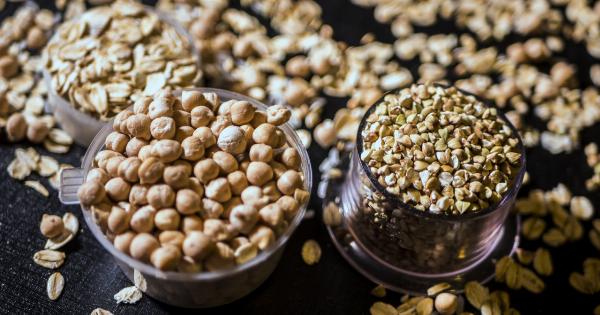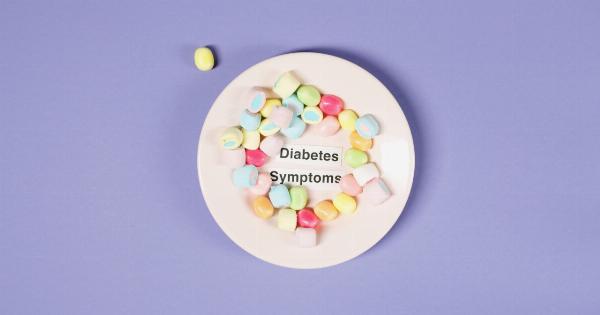Cervical cancer is a significant health concern among women worldwide. In recent years, researchers have been investigating the possible role of bacteria in the development of this deadly disease.
While human papillomavirus (HPV) infection has long been recognized as the primary cause of cervical cancer, emerging evidence suggests that certain bacterial infections may also contribute to its development. This article delves into the intriguing connection between cervical cancer and bacteria, shedding light on the latest research findings and potential prevention strategies.
Understanding Cervical Cancer and its Causes
Cervical cancer is a type of cancer that affects the cervix, the lower part of the uterus that connects to the vagina. It primarily occurs due to the long-term infection with high-risk strains of HPV, such as HPV-16 and HPV-18.
HPV is a sexually transmitted infection that can be contracted through sexual activity with an infected individual.
However, not all women infected with HPV develop cervical cancer. Several factors, including a weakened immune system, smoking, and hormonal changes, can increase the risk of the virus progressing to cancer.
This suggests that additional factors, such as bacterial infections, may play a role in the development of cervical cancer.
The Role of Bacterial Infections in Cervical Cancer
Research has shown that certain types of bacteria have been found in higher abundance in the cervical cells of women with cervical cancer compared to those without the disease.
One such bacterium is Chlamydia trachomatis, which is sexually transmitted and is already known to cause other reproductive tract infections.
Studies have also found a link between cervical inflammation and the presence of bacteria. Chronic inflammation in the cervical region can lead to DNA damage and mutations, which can eventually result in the development of cancer.
Bacterial infections, including Escherichia coli and Streptococcus anginosus, have been associated with increased inflammation in the cervix.
Furthermore, bacterial infections can lead to changes in the cervical microenvironment. These alterations may promote the growth and persistence of HPV infection, making it more likely to progress to cervical cancer.
The Bacterial Influence on HPV Persistence and Progression
Studies have revealed that certain bacteria can interfere with the body’s immune response to HPV infection, thereby allowing the virus to persist and progress to cervical cancer.
Bacterial infections can disrupt the natural balance of vaginal microbiota, causing an overgrowth of harmful bacteria while reducing the protective effects of beneficial bacteria.
Additionally, some bacteria produce substances or toxins that can weaken the immune system and impair the body’s ability to clear HPV infection.
This enables the virus to persist for longer periods, increasing the chances of developing cervical abnormalities and cancer.
Bacterial Infection and Cervical Cancer Risk
Evidence suggests that bacterial infections may increase the risk of cervical cancer, particularly when combined with persistent HPV infection.
In a study conducted by Smith et al. (2019), it was found that women with concurrent HPV infection and bacterial vaginosis (BV) had a significantly higher risk of cervical precancerous lesions compared to those with HPV infection alone.
Furthermore, the presence of certain bacteria, like Chlamydia trachomatis and Neisseria gonorrhoeae, has been associated with an increased risk of developing cervical intraepithelial neoplasia (CIN), a precancerous condition.
Detecting and treating these bacterial infections may therefore be crucial in cervical cancer prevention and early intervention.
Potential Prevention Strategies
Given the emerging evidence linking bacterial infections to cervical cancer, several potential prevention strategies have been proposed:.
1. Improved Hygiene Practices
Practicing good hygiene, including regular handwashing and maintaining cleanliness in the genital area, can help reduce the risk of bacterial infections.
Simple measures like using clean towels and underwear, avoiding douching, and wiping from front to back after using the toilet can make a significant difference.
2. HPV Vaccines
HPV vaccines, such as Gardasil and Cervarix, have been proven to be highly effective in preventing infection with high-risk HPV strains.
By reducing the prevalence of HPV infection, these vaccines indirectly decrease the risk of bacterial infections and subsequent development of cervical cancer. It is recommended that young individuals, preferably before their first sexual encounter, receive the HPV vaccine.
3. Regular Screenings and Treatment
Regular cervical cancer screenings, such as Pap smears or HPV DNA tests, can help detect precancerous lesions or early-stage cancer. If detected, appropriate treatment can be initiated promptly, preventing the progression to advanced stages.
Additionally, testing for bacterial infections, like Chlamydia trachomatis or BV, should be considered during routine cervical screenings to enable early detection and treatment.
4. Antibiotic Treatment
When bacterial infections are identified, appropriate antibiotic treatment should be administered to clear the infection, which may help prevent the development and progression of cervical abnormalities and cancer.
However, further research is needed to determine the optimal antibiotic regimen and its efficacy in preventing cervical cancer.
5. Maintaining Healthy Vaginal Microbiota
Ensuring a healthy vaginal microbiota by promoting the growth of beneficial bacteria, such as lactobacilli, may help maintain a balanced microbial environment.
Using probiotic supplements or consuming probiotic-rich foods, like yogurt, may contribute to the restoration of vaginal microbiota and reduce the risk of bacterial infections.
Conclusion
Although HPV infection remains the primary cause of cervical cancer, growing evidence suggests that bacterial infections may contribute to its development, persistence, and progression.
Bacteria such as Chlamydia trachomatis and Escherichia coli have been associated with increased inflammation, impaired immune response, and higher risk of developing cervical abnormalities. Appropriate prevention strategies, including improved hygiene practices, HPV vaccines, regular screenings, and antibiotic treatment, may help reduce the risk of cervical cancer associated with bacterial infections.
Further research is crucial to better understand the complex relationship between bacteria and cervical cancer, leading to more effective prevention and treatment approaches.






























